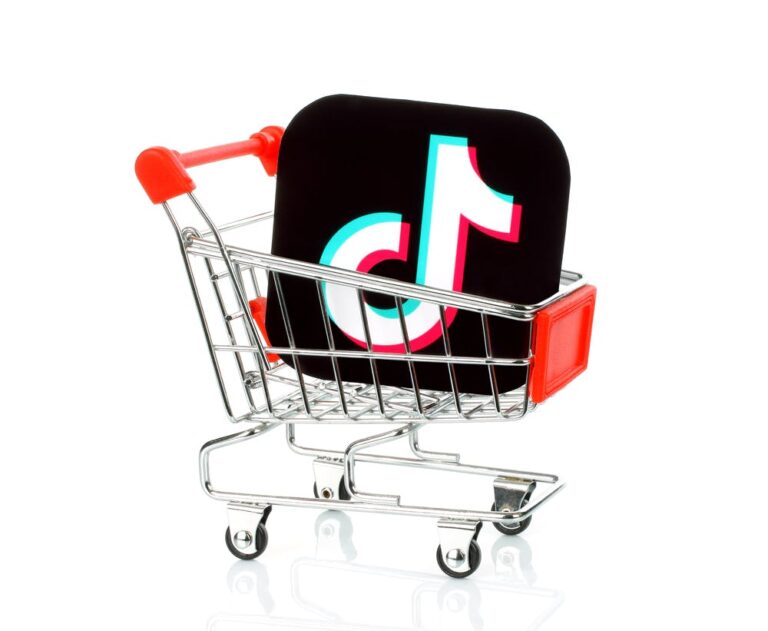
According to a report from Business Standard, 600,000 products were sold in the first hour alone. Before the promotion began, the brand also saw a 43% uplift in the number of customers who had wishlisted items, reaching 8.6 million active customers. Together, they favourited a whopping 83.6 million items.
In the month of September alone, online shopping transactions grew by a notable 17% to 16.3 trillion won (.69 billion), Pulse News Korea reports.
Alibaba records 8% rise in GMV for Singles Day 2021 despite subdued festivities
Beauty and personal care was the most popular category of the day, with sales up 190% compared to the start of the same event the year before. Accessories and sports apparel were the next biggest verticals for sales growth, recording 80% and 75% increases respectively.
November 11th 2020 saw Alibaba pull in record sales during one of the largest retail events in China – Singles Day. Purchases made in the 11-day campaign period covering the unofficial holiday topped billion, a new high for the company and a 26% increase on 2019’s event.
The year ending March 31st 2021 has marked one of the strongest performances for the retailer to date – total revenue for the group increased a huge 41% in the full year to an equivalent 9.5 billion, and revenue for the quarter alone grew 64% year-on-year.
Alibaba recorded an 8% rise in Gross Merchandise Volume (GMV) for its annual retail bonanza, Singles Day, reports CNBC: the tech and ecommerce giant brought in a total of 540.3 billion yuan (US .54 billion), up from 498.2 billion yuan last year and another record-breaking figure.
The brand’s popular 618 Grand Promotion, which spans 18 days in June and whose popularity is second only to rival Alibaba’s annual Singles Day event in November, helped accumulate additional online revenue, as well as 32 million new users on its platform during the quarter. Its grocery category drove many of these promotional transactions, with JD Fresh seeing a 70% year-on-year boost in sales within the first hour of the event, while alcohol sales exceeded RMB 200 million (£22.4 million) within the first five minutes.
Korea reports record online shopping transactions in Q3 2021
Big data compiled by one of China’s largest ecommerce players, JD.com, has found emerging night-time shopping habits among Chinese consumers over the past year.
Digital consumer spend per person in South East Asia is projected to increase by 60% over the course of 2021. The number of consumers who say they ‘mostly shop online’ has increased by 35% year-on-year, and 80% of the channels they use to browse and discover new products are now online. Shoppers within the region have also bought items from 60% more online product categories than they did in 2020, with Indonesian shoppers leading the way by purchasing from an average 8.8 different verticals annually.
Agency Statistics Korea say the results of the last quarter have been the largest ever recorded since the study began in 2001. It is interesting to see that, even with high case numbers, western markets are seeing the opposite trend occur: ecommerce sales falling steadily, and in some cases dropping back to pre-pandemic levels.
In the next five years, analysis predicts SEA’s ecommerce GMV will skyrocket to US 4 billion, almost double what it is expected to reach by the end of 2021 and equating to a compound annual growth rate of 14%. Ecommerce executives who were interviewed for the study believe that, thanks to a mostly hybrid model of working, 75% of the hours consumers spent shopping online from home this year will be retained after the pandemic subsides. This is corroborated by a majority of consumers indicating they would either increase or maintain their levels of spending on key categories.
The maternal and baby, pet, and luxury categories also performed strongly, demonstrating continued momentum across several verticals despite the return to a new normal. However, there were other unspecified categories that JD.com admits had previously ‘peaked during Covid-19’.
Indian online fashion marketplace Myntra sees record 19 million visitors to its site on first day of its annual Big Fashion Festival 2021
Digital tools came into their own during the Singles Day event this year. According to Alibaba’s data, its AI customer chatbot dealt with 2.1 billion questions, and more than 30 livestreaming channels on Taobao Live (Alibaba Group’s livestreaming tool) made over 100 million yuan in GMV.
Ecommerce penetration is still quite low for luxury fashion and lifestyle in China– it’s predicted to grow from 5% in 2019 to 7% in 2020 – whereas penetration in luxury beauty far outstrips any other category (expected growth 28% in 2019 to 38% in 2020).
Overall GMV rose 21% across the year, mostly driven by the home furnishing and FMCG categories, and later by apparel in the first three months of 2021. Further data also found that the longer a customer has been shopping on Alibaba platforms, the higher their annual spend and the more product categories they purchased from. Average annual spend was measured at ,404 for the fiscal year 2021, however, retention remained high among existing Alibaba customers regardless of their basket size.
Drilling down by vertical, online food delivery purchases rose 36.8% year-on-year, while sales of electronics grew 25.8%. Online transactions in the travel sector also saw a large jump of 40% as more Koreans chose to travel for the Chuseok holiday season than they did in 2020.
According to the data, the over-85s and white-collar workers make up the bulk of consumers shopping online in China during the late evening hours. Typically, these cohorts have higher-than-average disposable income and are ‘playing an active role in the night-time economy’, far more so than students and residents in smaller towns do, JD says.
Ecommerce penetration in South East Asia projected to grow 85% year-on-year by end of 2021
In its press release, the ecommerce giant said that more than 470 brands using Alibaba made 100 million yuan in gross merchandise value (GMV) as a result of the shopping festival. The platform also claimed it had processed 583,000 purchases per second during the peak of activity across the campaign. Of the quarter of a million brands that participated, 31,000 originated from outside of the Chinese market. 2,600 of these were joining the event for the first time.
However, this 8% rise also represents Alibaba’s slowest year-over-year growth rate since the event began. The event kicked off this year amidst the twin factors of a slowing economy and intense scrutiny from regulators, who are in the process of cracking down on China’s tech giants as well as on extravagant displays of wealth and spending. As a result, Singles Day 2021 was more restrained affair, with a focus on sustainability and social responsibility.
Amazon in Asia-Pacific: A 2020 update
JD.com sees annual active customer accounts rise 27.4% in year ending June 2021
According to 8 in 10 consumers in the region, the main reason for shopping with overseas retailers was the lower cost of products compared to those promoted by native retailers. It appears to be a much more pressing reason for shopping in this way, data suggests, than the prolonged closure of international borders. In fact, 9 in 10 plan to continue with their cross-border purchase habits even once overseas travel reopens post-pandemic.
How is ecommerce in Asia-Pacific changing in the wake of the Covid-19 pandemic, and what can we learn from these trends? We’ll round up the most notable stats about Covid-19’s impact on APAC ecommerce every month, and discuss what they mean for online retail both in the region and worldwide.
Analysis shows online sales conducted from 8pm-11pm local time between May 1st and July 1st 2021 grew more than 100% year-on-year, as shoppers increasingly choose their evening hours to browse products online. The trend is largely driven by the healthcare industry, which saw sales of medicine quintuple and sales of fitness equipment triple during throughout this time of day. This suggests home workouts are here to stay for many, despite recent widespread reopening.
A record number of luxury brands were also reported to be taking part in Singles Day, with JD boasting that it was “doubling down” on new fashion items across the flagship stores of “over 300 luxury brands” for Singles Day.
China’s emerging night-time shopping habits revealed by JD.com
Rival JD.com made 271 billion yuan (US .9 billion) in sales throughout the holiday, while major omnichannel retailer Suning.com exceeded 5 billion yuan (US $756 million) in omnichannel GMV across its ecommerce platform, Tmall shop, and livestreaming outlets 19 minutes after midnight on November 11th, the South China Morning Post reported.
More stats can be found in the following articles:
Around 20% were first-time users of the platform, equating to approximately 3.8 million shoppers, far above the brand’s estimates prior to the event which were benchmarked at 1.1 million across the week-long event.
Chinese retail giant JD.com experienced a 27.4% rise in annual active customer accounts in the year ending June 2021 to almost 532 million, due to an increased appetite for online shopping. These accounts are defined as unique customers that have shopped at least once with JD across the 12-month period, either via online retail or its online marketplace.
Cross-border ecommerce in Singapore boomed in year to June 2021
The pandemic has seen a rapid uptake of online and mobile commerce in India. Statistics from IBEF show that the country’s ecommerce order volume grew by 36% in 2020, while the total market is predicted to reach .2 billion by 2024 (a CAGR of 57%). These figures from Myntra prove what big ecommerce brands have to gain in the region and emphasises the magnitude of the shift in consumer behaviour.
A study released by YouTrip, shared by WARC, has found cross-border ecommerce in Singapore boomed under the conditions of the Covid-19 pandemic, rising 84% year-on-year in the 12 months to June 2021. Cross-border purchasing is quickly taking a larger share of the ecommerce market in the country, which is expected to reach billion by 2025.
AR, NFTs and the metaverse: How luxury brands innovated for China’s Singles Day shopping festival
Indian online fashion marketplace Myntra, owned by Walmart, has said it saw a record 19 million visitors to its website on the first day of its annual Big Fashion Festival 2021.
Cross-border ecommerce in China rose 46.5% in Q1 2021
Bain believes online luxury retail has changed permanently since the onset of the coronavirus pandemic, with most brands predicting online penetration of the sector in China to reach anywhere between 20%-25% within the next three years.
Many of the most popular websites driving heightened amounts of cross-border commerce originate from either China or the US. Taobao took the top spot for the year, with transactions via the site rising by 131%, followed by Amazon at number two. Alibaba placed third (with transactions up 120%), while eBay also made it into the top five (up 98%). June and November/December were reported as peak cross-border shopping periods for Singaporean consumers, reflecting prevalent seasonal sales promotions and events like Prime Day and Singles Day.
The Asia-Pacific (APAC) region boasts some of the most dynamic, innovative and fast-moving ecommerce markets: from the largest ecommerce market in the world, China; to markets with near-total internet connectivity, like South Korea, to markets with high ecommerce penetration and immense potential for growth, like Indonesia.
As of October 2020, luxury beauty ecommerce sales had grown by 60% alone since the same month the year before, making a particularly popular luxury vertical amongst Chinese consumers. More impressively, luxury fashion and lifestyle ecommerce sales in China saw an equivalent increase of 100%, although this started at a relatively small base in 2019 due to overseas purchases having been preferred up until this point.
The report claims that, overall, up to 52% of China’s retail sales will occur online throughout the course of 2021 (.8tn in transactions), versus a 29% share in South Korea and just a 15% share in the US. Much of this will be driven by cross-border sales of goods such as international luxury brands, for which Chinese consumers have the largest appetite compared to other regions of the world.
Alibaba reaches 1 billion active users served on its ecommerce platform
The Taobao app endured as Alibaba’s most popular social retail platform this year, and indeed the whole of China, as its livestreaming capability continued to make waves with sellers. GMV for Taobao Live climbed to .3 billion, reflecting the ever-growing interest in livestreaming in the region and signalling it to be the next big ecommerce trend in the West.
In an overview, the report explained, “China’s dominance of global ecommerce is no accident. It came about because of a specific set of planned circumstances: the rollout of fast-speed mobile networks even to rural communities, the building of logistics networks including warehousing and delivery; and the near total adoption of mobile payments across China in recent years.”
Singaporeans’ demand for bicycles drove the sharpest growth on cross-border websites over the year-long period, as did purchases of various K-Pop merchandise, which saw double and triple the number of sales respectively.
Nevertheless, the fact that GMV continued to grow in spite of these headwinds shows that the appetite for commerce is still strong in China. Alibaba’s major rival, JD.com, also saw a more impressive increase of 28% year-on-year, with transaction volume rising from 271.5 billion yuan in 2020 to 349.1 in 2021. Other positive news came in the form of increased sales from China’s less prosperous ‘lower tier’ cities: JD.com reported that users from lower-tier markets accounted for 77% of all shoppers during Singles Day, while Alibaba said that spending from lower-tier cities from 1st to 3rd November was up nearly 25% on the previous year.
China’s annual luxury online penetration increased from 13% in 2019 to 23% in 2020
With Black Friday just around the corner, the significant growth in purchase activity during China’s biggest shopping event of the year could indicate what is to come for online retailers this festive season, particularly for those with outstanding digital capability.
Other product categories that saw a spike during these evening hours were alcohol, skincare and beauty and pet services, all of which also experienced a 100% increase in sales versus the same period of 2020. Meanwhile, purchases of digital products out on top by rising 500% year-on-year, with 8pm-11pm accounting for more than half of transactions for this vertical across that take place across a whole day.
The country of Korea has reported its largest value of online transactions on record in the three months to September 2021, as higher Covid-19 case numbers affect consumer habits. Total sales reached almost 50 trillion won in the region (.32 billion), with reports citing ‘strong demand’ for food delivery services and electronics amid a new wave of infections.
In Q2 2021, the company also reported a 26% year-on-year overall rise in net revenue to RMB 253.8 billion (£28.5 billion), beating experts’ predictions. Revenue from its Product segment, which includes JD’s ecommerce arm, rose 23%.
Much of this growth has been spurred on by younger consumers in the Millennial and Gen Z cohorts, who are much more likely to use the internet to research and purchase luxury goods than their more mature counterparts. Gen Z is the only generation to cite online sources for all three of their top three favourite places to research luxury fashion. China’s annual luxury online penetration increased by a total 10 percentage points between 2019 and 2020 alone to 23%, driven by these changes in shopping habits.
Singles Day 2020 pulls in record sales
The pandemic has spurred on this trend in a number of ways. By December 2020, as many as 70% of China’s population – around 989 million people – were online, the majority via their mobile devices. Nearly 80% of this cohort were shopping online at this time, while 86% were actively using mobile payments. Add to this the restrictions on travel, Chinese consumers and tourists found it more difficult than ever before to make in-person purchases of international goods and have therefore turned to cross-border online retailers to do so.
According to a report published by Wunderman Thompson and JingDaily, ‘Transcendent Retail: APAC’, cross-border ecommerce in China rose 46.5% year-on-year in Q1 2021, reaching an equivalent value of .8bn.
In a press release announcing results for the full fiscal year 2021, Alibaba revealed it has now served a total of one billion active users on its ecommerce platform, including 240 million customers based outside of its primary market of China. Active users in China have grown by 85 million year-on-year, or 32 million quarter-on-quarter. Additionally, mobile Monthly Active Users reached 925 million, up by 79 million on the same period to March 2020.
Facebook and Bain & Company’s latest annual SYNC South East Asia report has revealed that ecommerce penetration in South East Asia is projected to grow by 85% by the end of 2021, vastly outpacing the growth of other major markets like India (estimated +10%) and China (estimated +5%). Data suggests almost eight in 10 people over the age of 15 in SEA will be digital consumers by the end of the year, while a further 70 million people in the region have begun shopping online for the first time since the pandemic started.
Purchases were made largely on mobile devices, which saw a 72.5% share of all transactions across the three-month period. Mobile was also responsible for 35.95 trillion won (.36 billion) of merchandise turnover – a rise of 26.9% year-on-year.
Given the huge growth of cross-border online shopping in China during Q1 alone, sales across the vertical now equate to 14.5% of all ecommerce sales in the country, data suggests. As the year continues, this will no doubt gain even more momentum, further increasing its share.






